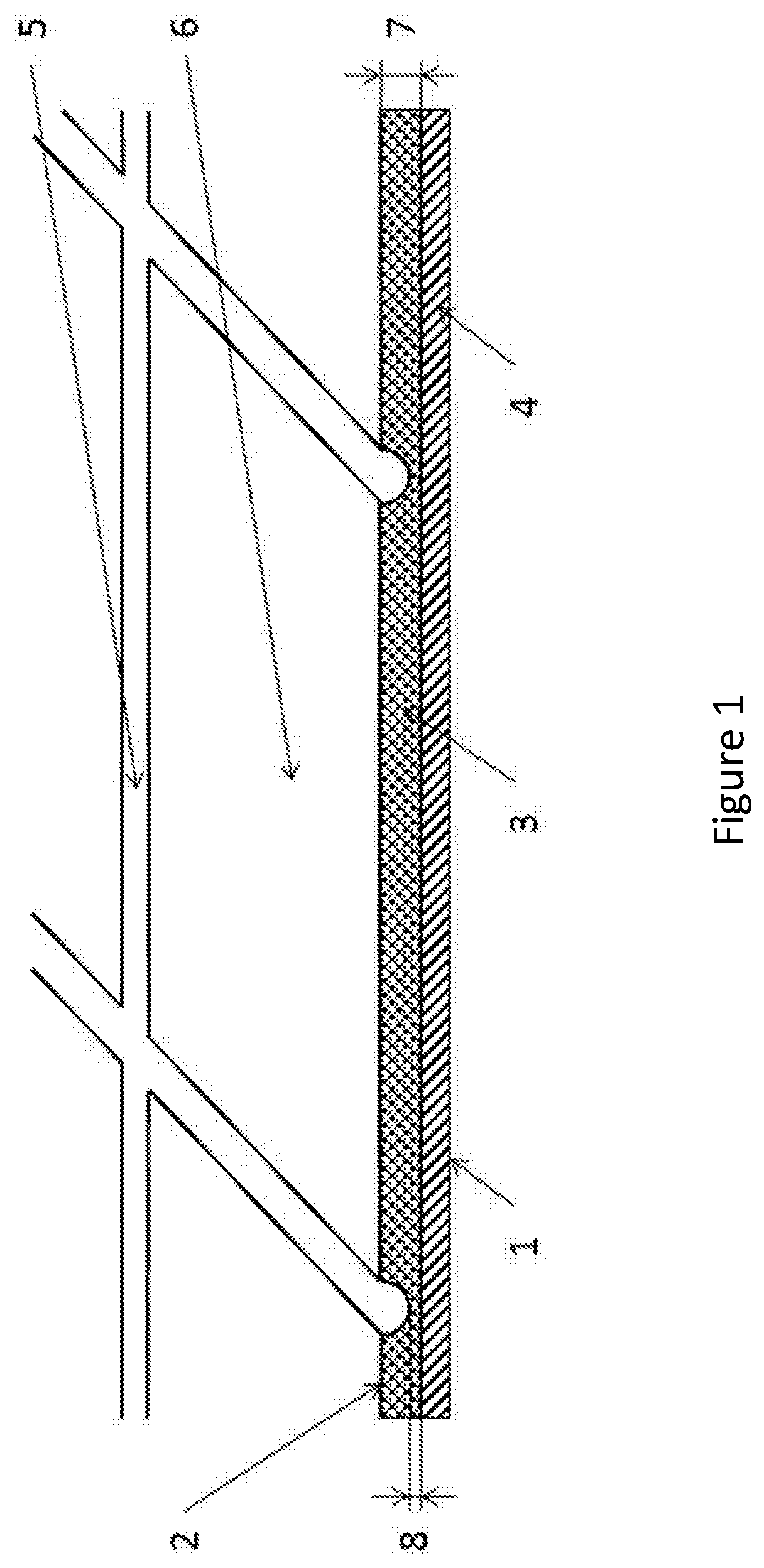Textured porous barrier transfer casing
a technology of transfer casing and porous barrier, which is applied in the field of multi-layered coextruded thermoplastic food casing, can solve the problems of affecting the appearance of meat products, and unappealing final product appearance, so as to achieve sufficient barrier effect, reduce weight loss during cooking and storage, and prevent contamination of environment and machinery.
- Summary
- Abstract
- Description
- Claims
- Application Information
AI Technical Summary
Benefits of technology
Problems solved by technology
Method used
Image
Examples
examples
[0268]The non-oriented casing of comparative example C1 was produced on a blown film extrusion line with 5 extruders, using the following raw materials:
PE:polyethylene:LLDPE 1004 YB by ExxonMobiltie:modified polyolefin:Admer NF 518E by Mitsui ChemicalsPA6:polyamide:80% Tarnamid T30 by Zaklady Azotowe20% PA 6I / 6T Grivory G21 by EMS
[0269]The tubular casing was made by plasticizing and homogenizing the PE, tie and PA6 in the respective extruders as described in table 1 below, the first layer mentioned being the one in contact with the foodstuff. Polyamide based layers had melt temperatures of around 240° C. and polyolefin-based layers and adhesives (=tie) of around 220° C. The 5 melt-flows were coextruded into a tube by using a 5-layer head at 240° C. in which the individual flows were joined in quantitative ratios according to the desired layer thickness of the individual layers and extruded through an annular die. The bubble was air-cooled via the internal air and a cooling ring on t...
PUM
 Login to View More
Login to View More Abstract
Description
Claims
Application Information
 Login to View More
Login to View More - R&D
- Intellectual Property
- Life Sciences
- Materials
- Tech Scout
- Unparalleled Data Quality
- Higher Quality Content
- 60% Fewer Hallucinations
Browse by: Latest US Patents, China's latest patents, Technical Efficacy Thesaurus, Application Domain, Technology Topic, Popular Technical Reports.
© 2025 PatSnap. All rights reserved.Legal|Privacy policy|Modern Slavery Act Transparency Statement|Sitemap|About US| Contact US: help@patsnap.com

